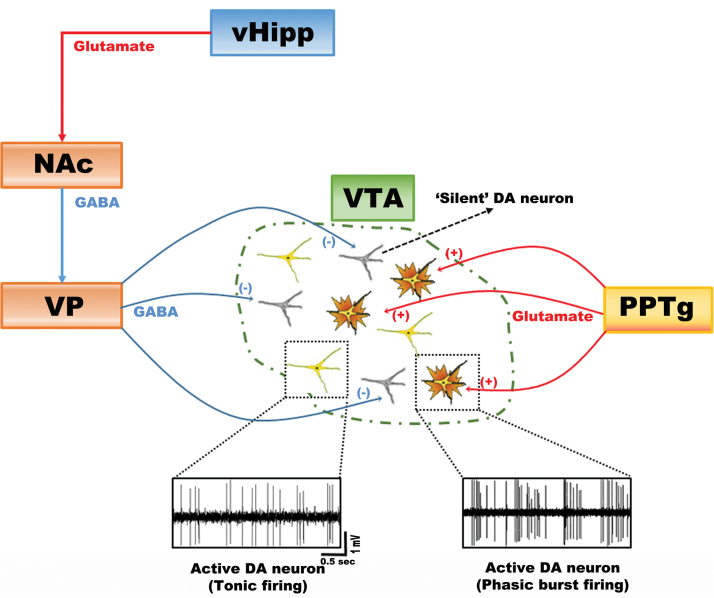Fig. 1.
Dopamine (DA) neurons exist in distinct states of activity: baseline tonic population activity (ie, proportion firing spontaneously) and rapid, salience-driven phasic burst firing. In normal rats, approximately one half are firing spontaneously, with the other half in an inhibited, nonfiring state. This inhibition is maintained by a GABAergic inhibitory input from the ventral pallidum (VP). This spontaneous tonic firing state is regulated by the ventral hippocampus (vHipp) through excitatory projections to the nucleus accumbens (NAc), which, in turn, inhibits the ventral pallidum (VP) and releases silent DA neurons from inhibition. But only active DA neurons can be driven to phasic firing by the pedunculopontine tegmentum (PPTg). Therefore, the number of neurons that are active determines the amplitude of the phasic DA response.

